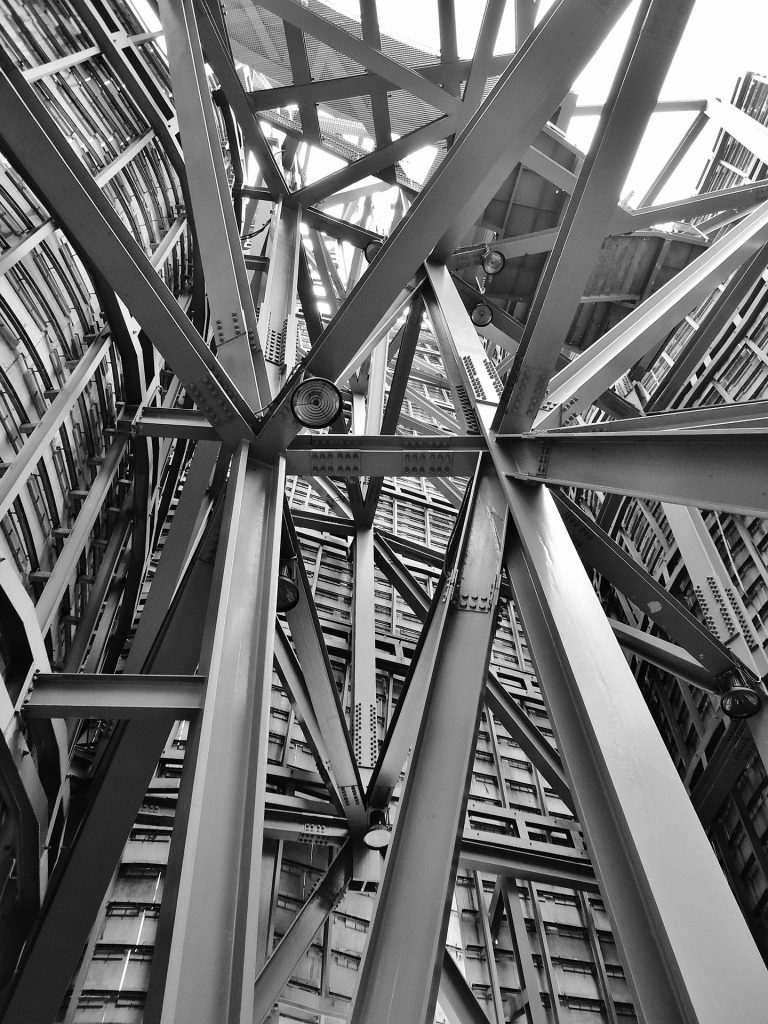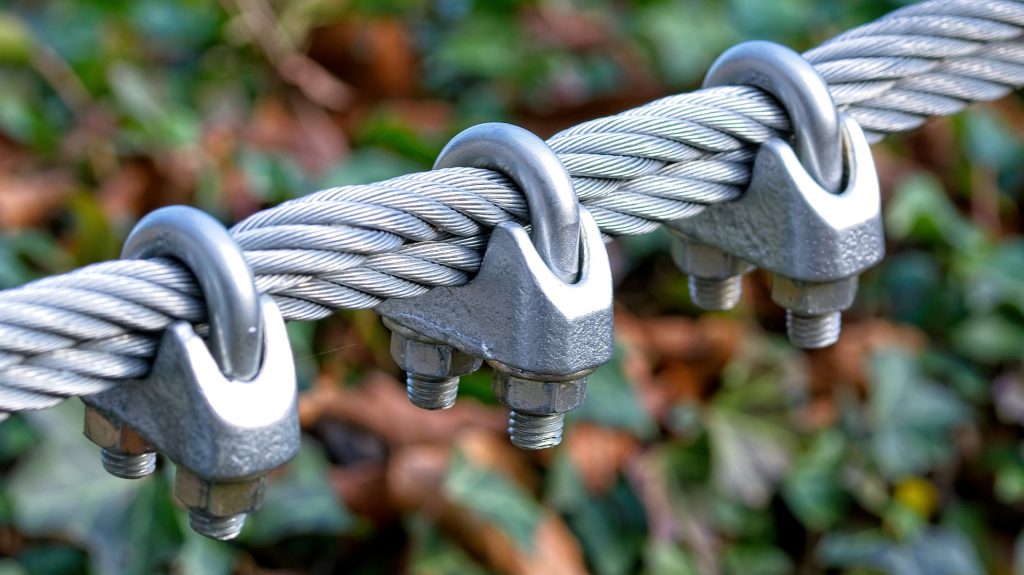Concrete is good in handling compressive strength but weak in tensile strength. Structures undergo stresses; after adding steel, concrete can handle compressive and tensile stresses making concrete a stronger material. Concrete resists squeezing due to compressive strength and steel resists bending and stretching due to tensile strength. This enhanced ductility reduce long term deflections, or increase the flexible capacity. Steel bars are used, which are firmly anchored inside the concrete without the risk of slipping.
Steel in concrete is also helpful in preventing excessive cracking resulting from temperature variation and shrinkage cracks.
Structural steel

Structural steel is used as a construction material for making structural steel shapes. The shape is a profile, formed with a specific cross-section and following defined standards for chemical composition and mechanical properties. Examples of standardized structural steel shapes are the I-shape, Z-shape beam, angle, plate channel, and HSS-shape.
Reinforcement steel
- Hot-rolled deformed bars
Those are the most commonly used type of reinforcement in concrete constructions. The deformations on the surfaces of the bars are aimed to bond with the concrete, minimizing slippage in the concrete. Deformed bars also possess more tensile stresses than mild steel plain bars.
- Mild steel plain bars
Those plain bars have a smooth surface as compared to deformed bars. Plain bars possess a lower tensile strength than deformed bars and are therefore used smaller construction projects.
- Cold worked steel reinforcement
When hot rolled steel undergoes cold working, the crystal structure of the metal is deformed (bent, twisted, compressed), resulting in the relatively uniform crystalline plains (from recrystallization anneal) moving over and past one another. This movement creates imperfections and faults, similar to faults in the earth’s crust during earthquakes. These discontinuities in the structure are dislocations.
These dislocations provide further resistance to deformation, which can be seen as an increase in hardness, as measured by the penetration of an indenter under load. The ultimate tensile strength and yield strength also increase due to the “locking effect” of those distorted and twisted grains (metallic crystals).
- Prestressing steel
Used in the concrete girders of bridges prestressing cables are made up of multiple wires hectically spun together into strands.

For different seismic zones, different types of steel bars are used. Apart from safety during earthquakes, steel also bears the tension forces generated while the concrete expands thermally during a fire or another temperature rise. Steel, together with concrete results in the stability of the structure.
The information about the types of steel used in concrete and cement is good information.thank you.Brainstorm Infotech is headquartered in Bengaluru, the start-up capital of India. It has carved a niche for itself in the field of structural steel detailing and allied services with a credit of completing over 1250 projects so far. We started small with a team of five professionals in 2010 but have earned the trust and respect of our clients that has led to long-standing associations.
These are the most typical types of reinforcement found in concrete buildings. In order to minimise concrete slippage, the deformations on the surfaces of the bars are designed to bind with the concrete. Additionally, deformed bars have higher tensile stresses than normal mild steel bars.https://www.brainstorminfotech.co.in/index.php
thank you for sharing about the types of Steel Used in Concrete and Construction .it is useful. Brainstorm Infotech is headquartered in Bengaluru, the start-up capital of India. It has carved a niche for itself in the field of structural steel detailing and allied services with a credit of completing over 1250 projects so far. We started small with a team of five professionals in 2010 but have earned the trust and respect of our clients that has led to long-standing associations.https://www.brainstorminfotech.co.in/
it is a good product and also useful. thank you for sharing. Brainstorm Infotech is headquartered in Bengaluru, the start-up capital of India. It has carved a niche for itself in the field of structural steel detailing and allied services with a credit of completing over 1250 projects so far. We started small with a team of five professionals in 2010 but have earned the trust and respect of our clients that has led to long-standing associations.https://www.brainstorminfotech.co.in/
Very nice blog. great information to us thank you for sharing this excellent content. Brainstorm Infotech is headquartered in Bengaluru, the start-up capital of India. It has carved a niche for itself in the field of structural steel detailing and allied services with a credit of completing over 1250 projects so far. We started small with a team of five professionals in 2010 but have earned the trust and respect of our clients that has led to long-standing associations.visit our site:https://www.brainstorminfotech.co.in//
Steel Used in Concrete and Construction .it is useful. Brainstorm Infotech is headquartered in Bengaluru, the start-up capital of India. It has carved a niche for itself in the field of structural steel detailing and allied services with a credit of completing over 1250 projects so far. We started small with a team of five professionals in 2010 but have earned the trust and respect of our clients that has led to long-standing associations.https://www.brainstorminfotech.co.in/
The best part of your blog for me is when you said that an angle steel section can provide high structural capacity.Brainstorm Infotech is headquartered in Bengaluru, the start-up capital of India. It has carved a niche for itself in the field of structural steel detailing and allied services with a credit of completing over 1250 projects so far. We started small with a team of five professionals in 2010 but have earned the trust and respect of our clients that has led to long-standing associations.visit our site:https://www.brainstorminfotech.co.in/
great information to us thank you for sharing this excellent content. Brainstorm Infotech is headquartered in Bengaluru, the start-up capital of India. It has carved a niche for itself in the field of structural steel detailing and allied services with a credit of completing over 1250 projects so far. We started small with a team of five professionals in 2010 but have earned the trust and respect of our clients that has led to long-standing associations.visit our site:https://www.brainstorminfotech.co.in//
thank you for sharing this excellent content. Brainstorm Infotech is headquartered in Bengaluru, the start-up capital of India. It has carved a niche for itself in the field of structural steel detailing and allied services with a credit of completing over 1250 projects so far. We started small with a team of five professionals in 2010 but have earned the trust and respect of our clients that has led to long-standing associations.visit our site:https://www.brainstorminfotech.co.in//